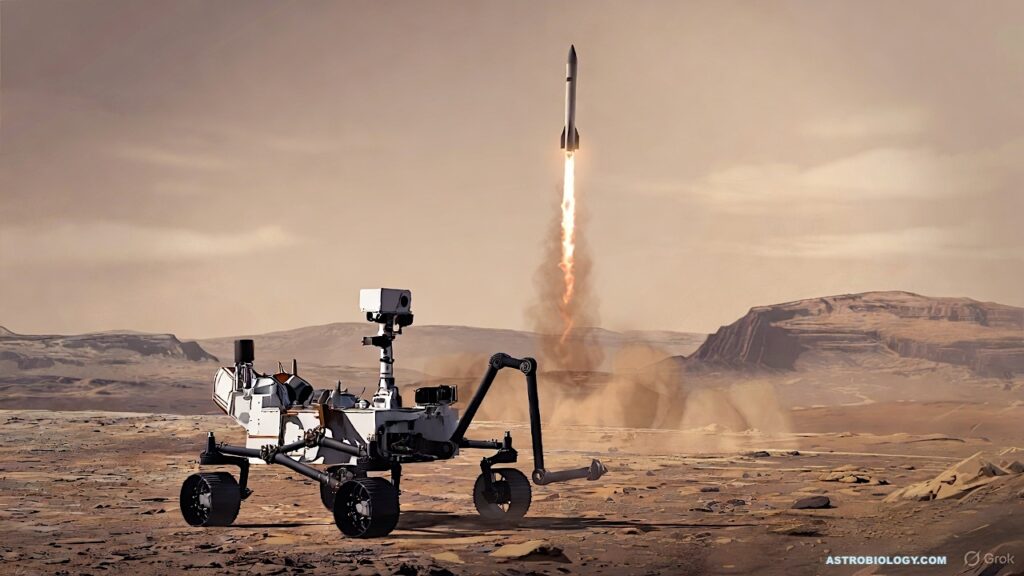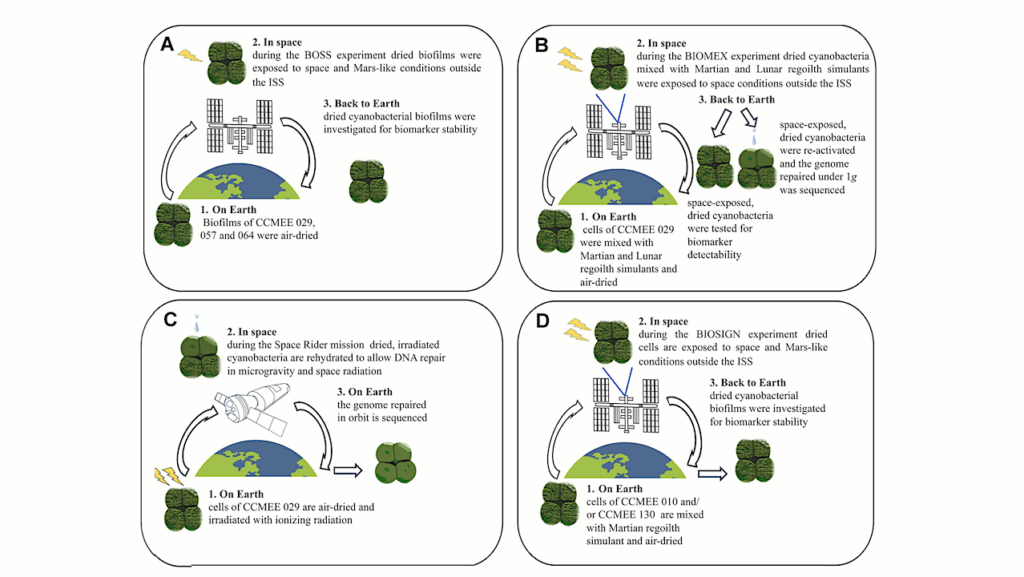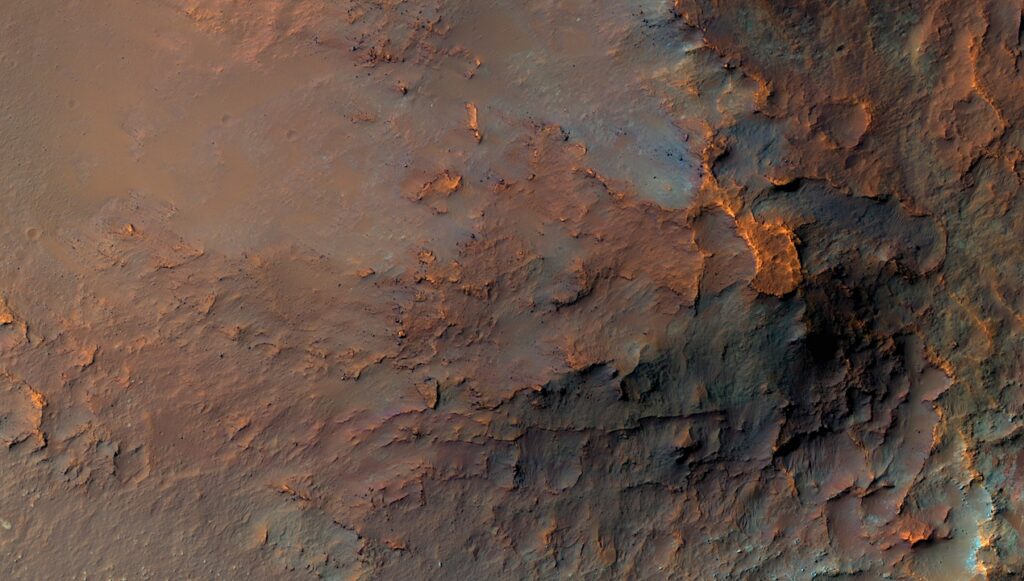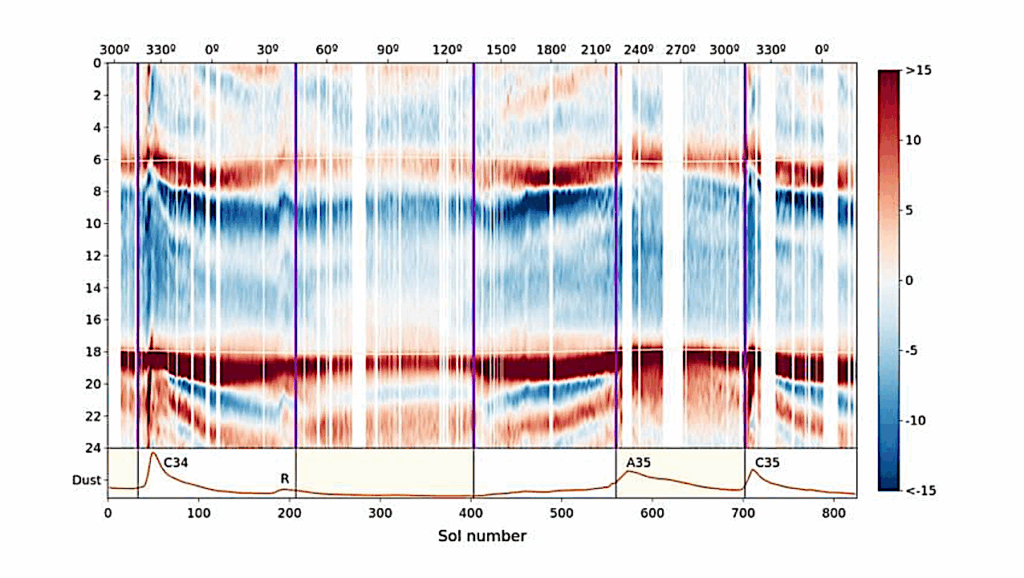Volcanoes On Mars Could Be Active, Raise Possibility of Recent Habitable Conditions

Evidence of recent volcanic activity on Mars shows that eruptions could have taken place within the past 50,000 years, a paper by Planetary Science Institute Research Scientist David Horvath says.
Most volcanism on the red planet occurred between 3 and 4 billion years ago, with smaller eruptions in isolated locales continuing perhaps as recently as 3 million years ago. But, until now, there was no evidence to indicate whether Mars could still be volcanically active.
Using data from satellites orbiting Mars, the research team found evidence of an eruption in a region called Elysium Planitia that would be the youngest known volcanic eruption on Mars, said Horvath, lead author on “Evidence for geologically recent explosive volcanism in Elysium Planitia, Mars” (https://doi.org/10.1016/j.icarus.2021.114499) that appears in Icarus.
“This feature is a mysterious dark deposit, covering an area slightly larger than Washington D.C. It has a high thermal inertia, includes high‑calcium pyroxene-rich material, and is distributed symmetrically around a segment of the Cerberus Fossae fissure system in Elysium Planitia, atypical of aeolian, or wind-driven, deposits in the region. This feature is similar to dark spots on the Moon and Mercury suggested to be explosive volcanic eruptions,” Horvath said. “This may be the youngest volcanic deposit yet documented on Mars. If we were to compress Mars geologic history into a single day, this would have occurred in the very last second.”

Elysium Plantia, the region of recent explosive volcanism (white box) and the InSight lander. Credit: MOLA Science Team.
The majority of volcanism in the Elysium Planitia region and elsewhere on Mars consists of lava flowing at the surface, though there are numerous examples of explosive volcanism on Mars. However, this deposit appears to be different. “This feature overlies the surrounding lava flows and appears to be a relatively fresh deposit of ash and rock, representing a different style and time period of eruption than previously identified pyroclastic features,” Horvath said. “This eruption could have spewed ash as high as 10 kilometers into the Martian atmosphere but likely represents a last gasp of erupted material. Elysium Planitia hosts some of the youngest volcanism on Mars, dating around 3 million years ago, so it is not entirely unexpected. It is possible that these sorts of deposits were more common but have been eroded or buried.”
The site of the recent eruption is about 1,000 miles (1,600 kilometers) from NASA’s InSight lander, which has been studying tectonic activity on Mars since 2018. Two Marsquakes have been localized to the region around the Cerberus Fossae and recent work has suggested the possibility that these could be due to the movement of magma at depth.
“The young age of this deposit absolutely raises the possibility that there could still be volcanic activity on Mars and it is intriguing that recent Marsquakes detected by the InSight mission are sourced from the Cerberus Fossae,” Horvath said. “However, sustaining magma near the surface of Mars so late in Mars history with no associated lava flows would be difficult and thus a deeper magmatic source would likely be required to create this eruption.”
A volcanic deposit such as this also raises the possibility for habitable conditions in the near surface of Mars in recent history, says Horvath. “The interaction of ascending magma and the icy substrate of this region could have provided favorable conditions for microbial life fairly recently and raises the possibility of extant life in this region.”
Horvath’s work on the research took place when he was a postdoctoral researcher at the University of Arizona’s Lunar and Planetary Lab. He is now a Research Scientist at the Planetary Science Institute.
Evidence for geologically recent explosive volcanism in Elysium Planitia, Mars, Science Direct
Astrobiology
THE PLANETARY SCIENCE INSTITUTE:
The Planetary Science Institute is a private, nonprofit 501(c)(3) corporation dedicated to Solar System exploration. It is headquartered in Tucson, Arizona, where it was founded in 1972.
PSI scientists are involved in numerous NASA and international missions, the study of Mars and other planets, the Moon, asteroids, comets, interplanetary dust, impact physics, the origin of the Solar System, extra-solar planet formation, dynamics, the rise of life, and other areas of research. They conduct fieldwork on all continents around the world. They also are actively involved in science education and public outreach through school programs, children’s books, popular science books and art.
PSI scientists are based in 30 states and the District of Columbia, and work from various locations around the world.








